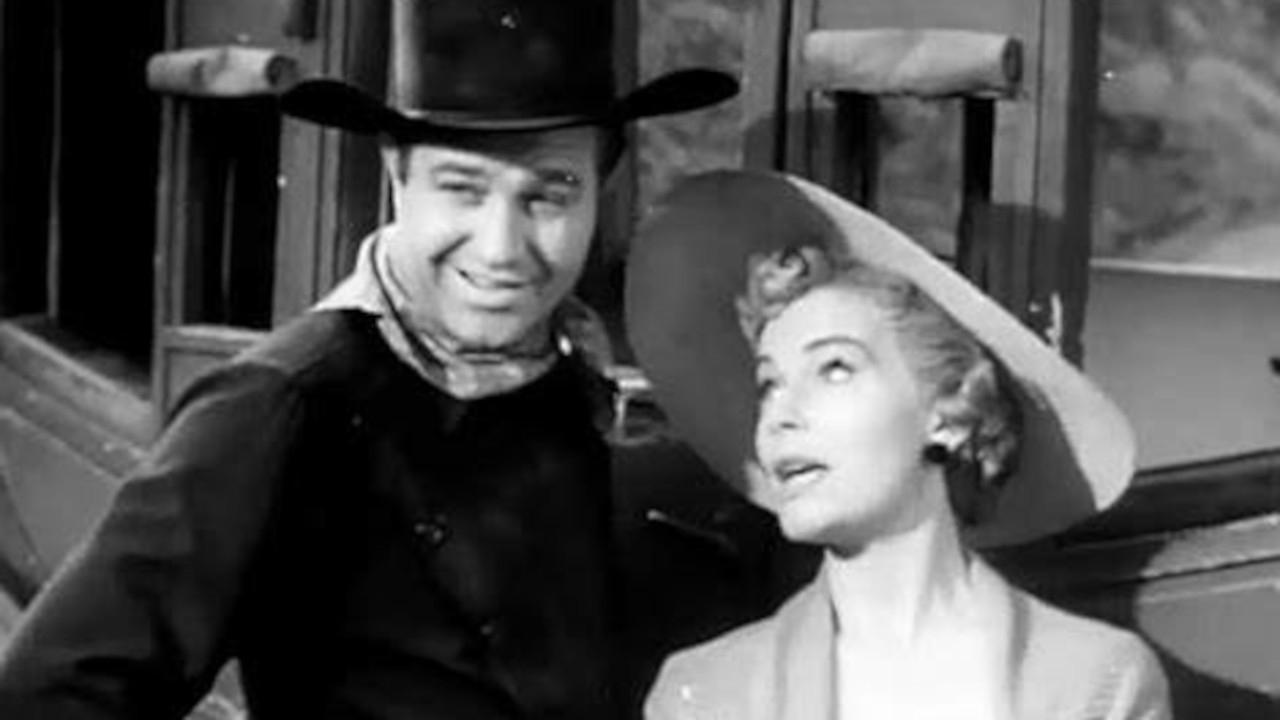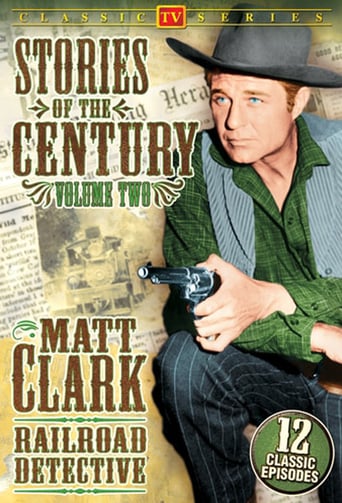

What a beautiful movie!
... View Morenot horrible nor great
... View MoreBest movie of this year hands down!
... View MoreIt’s fine. It's literally the definition of a fine movie. You’ve seen it before, you know every beat and outcome before the characters even do. Only question is how much escapism you’re looking for.
... View MoreStories Of The Century casts Jim Davis and Mary Castle as a pair of railroad detectives who seem to have aided in the apprehension or demise of every outlaw in the west. The years of their operations range all the way from the Civil War to the Theodore Roosevelt era and yet they aged not a day. This is in the tradition of the B western and it was the soon to be extinct Republic Pictures who produced this for television. William Witney, veteran contract director for Republic seems to have done most of the episodes.I guess the fact that they ran out of name bandits was the cause of Stories Of The Century met its demise. A studio like Republic that had small scale operations should have been the first ones into television. Probably Herbert J. Yates regretted he didn't move earlier into the small screen.The episodes I saw of the show had not one hint of any romance between Davis and Castle. They were all business every week and while Castle's considerable beauty and charm caused the fall of many an outlaw, she and Davis never got personal. In fact they were as impersonal as any Dragnet Show that Jack Webb did. Davis and Castle dealt only in facts.Stories Of The Century with all the disclaimers about the impossibility of Davis and Castle being Zelig like at the scene of every outlaw's fall was not a bad series. It was a beginning of the TV trend to more adult westerns.
... View MoreThis is an interesting series that takes real life people (Jesse James, John Wesley Hardin, etc)...and dramatizes part of their real story with a continuing series character taking part in that story. Railroad Detective "Matt Clark" -- takes a role in tracking down famous outlaws from the Old West in stories that are at least partly based on the true accounts. In that sense, it's almost an anthology series, and as someone else pointed out, this odd structure poses some timeline conflicts with the real events, but it's a fun series with plenty of action to satisfy a western-hungry 1950's audience -- and it still holds up pretty well 55 years later. Clark cuts a powerful figure in his western gear as he goes up against some of history's baddest baddies. And his girl-sidekick Frankie is quite a dish. If you're a western fan, be sure to check it out if you have a chance.
... View MoreThis rather poorly named western series won an Emmy for best syndicated program and is certainly an interesting series. It was produced by Republic, the studio which did action better than anyone, and they put their best into it. Each episode was built around a real historical figure of the old west. A railroad detective named Matt Clark, similar to the later Elliot Ness with the gangsters of the 1920's and 30's, managed to become involved with almost every notorious western outlaw between the middle of the 1800's and WWI. The series' best asset was Jim Davis. Tall, rugged, ruggedly good looking, in prime shape, with an authentic western accent, and great riding skills which made him utterly convincing in the action scenes, Davis was every inch the western hero. He was teamed with two lovely and active co-stars, Mary Castle as "Frankie" during the first season, and Kristine Miller as "Jonesy" during the second. Each worked well with Davis.What separated this show from its contemporaries and much of what came later was the professionalism invested in the action scenes. Ace action directer William Witney directed 30 episodes. Franklin Adreon the rest. Both filmed the action with polish. Republic's vast store of stock footage from serials and B's was utilized to give scope. The level of individual episodes rose or fell with the quality of the guest stars brought in to the play the outlaws. Among the really good ones were Marie Windsor as Belle Starr, Lee Van Cleef as Jesse James, Fess Parker as Grat Dalton, Jean Parker as Cattle Kate, and Joe Sawyer and Slim Pickins as Butch Cassady and "The Smilin' Kid". The cream of the western up and comers, Pickins, Parker, Denver Pyle, James Best, and Richard Jaeckel, honed their craft. B veterans with decades of experience under their belts, Harry Woods, Glenn Strange, Kenneth MacDonald, Earle Hodgkins, Steve Darrell, and Chief Yowlachie, provided the old leather feel of vintage westerns.The weakness of the concept was that there are only so many famous western outlaws. By the second season the famous figures were becoming a mite obscure for all but the most dedicated history buff. Nevertheless, a few of the later shows were a match for any, due to the guest stars. Henry Brandon portrayed rustler Nate Champion, and former Republic star Don Barry was outstanding as small-time outlaw Milt Sharp.Western fans or history buffs will want to see this.
... View More'Big' Jim Davis, as Matt Clark, Railroad Detective, traveled west each week to aid in the capture of one of history's notable badmen(or women). At times, Clark's appearance at the scene seems somewhat contrived, as in just "happening" to be in town when Ford shoots Jesse James. The stories do have some limited educational value, as each one sticks to the basic facts, although production values for the series were decidedly low budget. One thing I could never figure out...one week Clark would chase Quantrill in 1863, the next Tom Horn in 1903...30 years apart...yet he never aged!
... View More